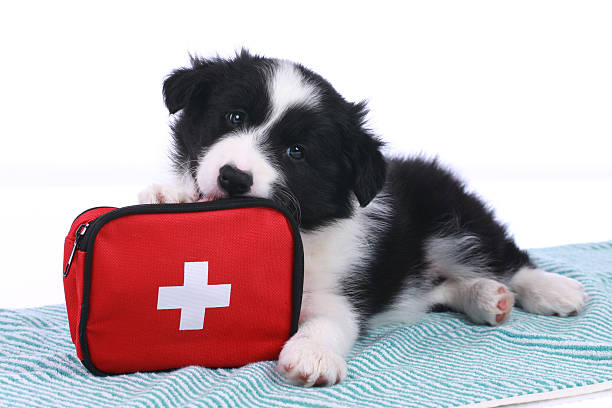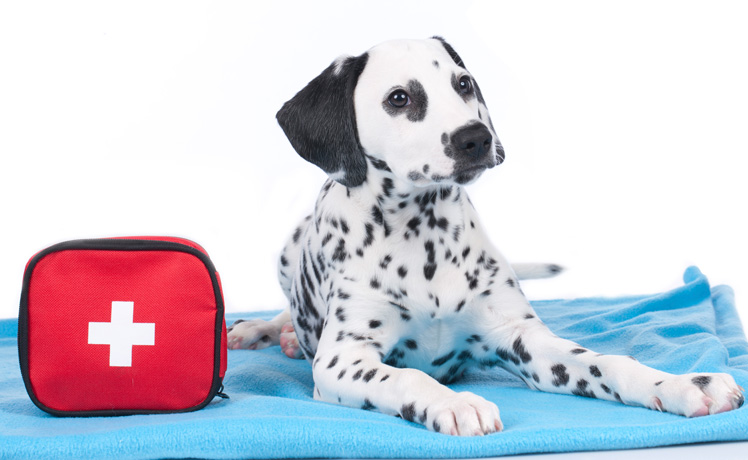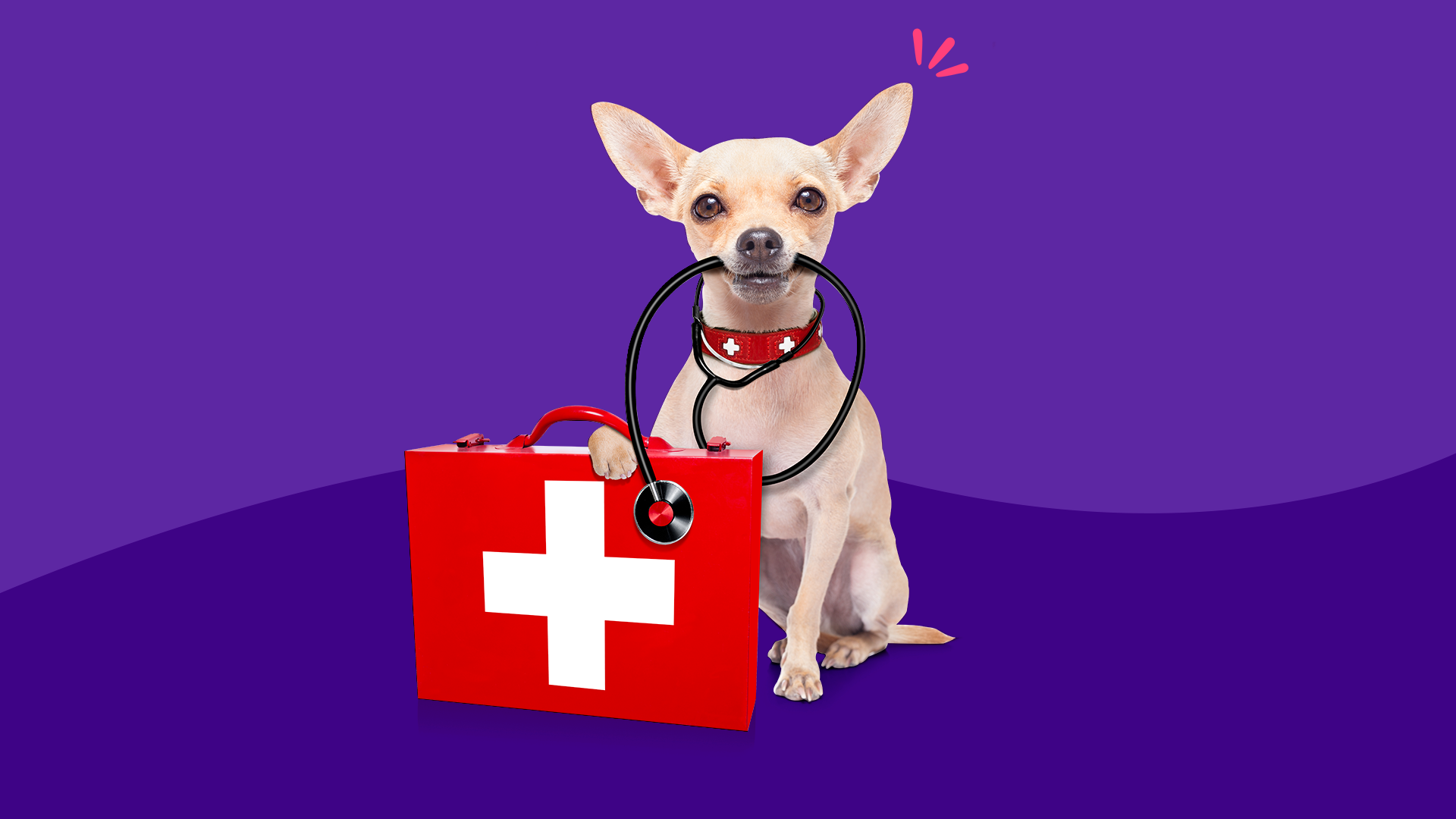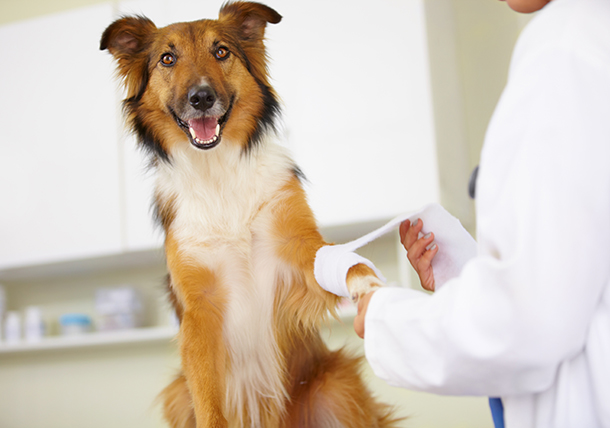With your furry friend by your side, it’s important to be ready for any health hiccup that might arise! Creating a dog first aid kit is a smart way to ensure you have everything you need when emergencies strike. From booboos to sniffles, we’ll guide you through the process, making it fun and easy, so you can rest easy knowing you’re prepared for whatever may come your way. So, let’s gather those supplies and keep your pup happy, healthy, and ready to romp!
Key Takeaways:
- Essential Supplies: A comprehensive dog first aid kit should include items such as gauze, antiseptics, adhesive tape, scissors, and tweezers to treat common injuries and emergencies.
- Specific Medications: Incorporate imperative medications like antihistamines, activated charcoal, and flea and tick treatments that can be crucial during health crises.
- Emergency Procedures: Familiarize yourself with basic first aid techniques and emergency response protocols to effectively use the kit during health emergencies.
Why Every Dog Owner Needs a First Aid Kit
For those who have a furry friend, you know that they can bring boundless joy, but also, quite a bit of unpredictability. A first aid kit for your pup is not just a suggestion; it’s an necessary component of responsible dog ownership. Being prepared for health emergencies is key, and having a kit at the ready can make all the difference between a quick fix and a trip to the vet. Picture this: your playful pooch, bounding through the park, suddenly stumbles! A first aid kit can help you tackle those hiccups with confidence and grace.

Accidents Can Happen Anytime
Any canine companion can find themselves in a pickle, from a splinter sticking out of a paw to an upset tummy after munching on something they shouldn’t. You might think you’re living in a puppy paradise, but even in the most secure environment, mishaps can sneak up like a cat on a hot tin roof! Keeping a first aid kit handy enables you to respond swiftly to unexpected scrapes and snafus, ensuring your four-legged friend gets the help they need, right when they need it.
Common Health Emergencies in Dogs
For the safety of your beloved canine, it’s wise to know the common health emergencies that might rear their heads. Whether it’s a bee sting, a cut paw, or even heatstroke on a scorching summer day, awareness is your best ally. By understanding these situations, you can prepare your first aid kit accordingly, stocking it with items that can help alleviate pain and provide comfort until you can get to the vet. Knowledge is power, and being ready is your noble quest!
This preparation not only empowers you as a caregiver but helps to keep your furry friend feeling safe and secure. Think about having antiseptics, bandages, tweezers, and even a digital thermometer — all tucked into your ready-to-go kit. Your dog deserves the best care, and having a well-stocked first aid kit helps to ensure that you’re fully equipped to handle the silliest of situations and every single emergency with care and flair!
Essential Items for Your Dog’s First Aid Kit
It’s always wise to be ready for anything when you have a furry friend by your side. The crucial items in your dog’s first aid kit can make all the difference during a health emergency. You’ll want to gather supplies that cater to common injuries and ailments that might arise, ensuring your pup feels better in no time, or at least, while you seek professional help. Let’s look into the must-have components of a well-equipped first aid kit designed just for your beloved dog!

Bandages and Wound Care
On to bandages, the first line of defense for scrapes and cuts that might cause distress. You’ll want to pack adhesive bandages, gauze pads, and self-adhesive wrap to keep wounds clean and protected. Incorporating a splint or some form of rigid material can assist in stabilizing any fractures or injuries that might hinder your pup’s ability to move comfortably. Keeping your dog calm during treatment is just as critical — so having some treats handy might just do the trick!
On the bandage front, you should also consider including antiseptic wipes and cleaning solutions that are dog-safe. Cleaning a wound properly before applying a bandage is very important to prevent infections. It’s all about snuggly hugs and ensuring their health, so be prepared to pamper your pet while they heal!
Pain Relief and Antihistamines
Wound care often goes hand-in-hand with pain relief for any discomfort your dog may experience. Having appropriate medications on hand can bring peace to both you and your furry friend. Be sure to consult your veterinarian about the right pain relievers and antihistamines before you need them, so you’re ready for those unexpected ‘oopsies’ that could arise during a romp in the park.
Plus, remember that not all human medications are suitable for dogs. Always, always check before sharing your stash! Monitor your dog for any reactions and be prepared to contact an emergency vet if anything seems off. Your dog relies on you to make them comfortable, so a little forethought goes a long way!
Blister and Burn Care
First on our list for blister and burn care are the soothing ointments and creams that can help cool an irritated paw after a hot pavement stroll. You’ll want to keep burn gels and blister pads handy, just in case your adventurous pup has a little too much fun outdoors or decides to explore the oven’s warmth (we know how curious they can be!).
Essentially, having burn and blister care items available means you can treat those little mishaps without too much fuss. Keeping a cool head and being prepared to soothe their discomfort can help maintain calm during a potentially stressful moment.
Eye and Ear Care
Burns aren’t the only concern! Your dog’s eyes and ears also need a little TLC. You’ll want to pack dog-safe eye wash and ear cleaning solutions to address any irritants or infections that may occur. It’s like a spa day to help keep those important senses clear and clean! You never know when a little dirt or debris can wreak havoc, so it’s better to be safe than sorry.

To ensure you’ve got your bases covered, consider having some cotton balls or gauze to help with the cleaning process. Gentle care when looking after those delicate areas of your pup can make all the difference. Your pooch wants to see the world clearly and hear those treats being tossed, so be prepared to help them enjoy every moment!
Additional Items for Specific Health Issues
Now, as you gather your supplies, there are some special items you’ll want to include for those pesky health issues that can pop up unexpectedly. Tailoring your kit to these specific needs will truly prepare you, like a wise doggie medic, ready to face any challenges on your furry friend’s journey. So, let’s dig into the details together and see what extra goodies you might need!
Allergic Reactions and Anaphylaxis
For those moments when your pup encounters something that doesn’t quite agree with them, you’ll want to stock your kit with antihistamines. While it’s always best to consult with your vet to find out which ones are safe for your dog, having a few recommended doses on hand can be a lifesaver, quite literally! An EpiPen could also be a great addition, especially if your dog has known severe allergies. Quick action can mean the difference between sniffing and suffering!
For the ultimate readiness, you might also consider including a list of allergens your dog has reacted to in the past. Knowing whether your furry buddy is allergic to bee stings or certain foods can help you act swiftly. Keep in mind, the sooner you can react to an allergic episode, the better your chances of a smooth and swift recovery!
Bleeding and Shock
Bleeding can be a frightening sight, but having the right tools on hand makes it easier to manage the situation! Make sure your kit includes sterile gauze pads, adhesive tape, and a clean cloth to apply pressure on a wound. Knowing how to hold that pressure can work wonders while you make plans for a trip to the vet or pet hospital. And don’t forget to pack a pair of scissors to cut through any stubborn fur or clothing—little preparations can help you avoid disaster!

Bleeding can lead to shock, which is a serious concern you’ll want to keep in mind. Shock can happen when a dog loses too much blood, and it can cause their organs to struggle. Act quickly by keeping your pup calm, warm, and still. A well-prepared pet parent can save the day, ensuring your furry friend is stable until professional help reaches you!
Broken Bones and Fractures
Shock sets in when you witness something all too scary, like your little buddy’s mishap that results in a fracture. In your first aid kit, consider including a splint that’s wrapped in bouncy fabric to comfortably secure those broken bones. You’ll also want to have some tape handy to create a supportive structure while you whisk them off to the vet for further evaluation. A calm canine is a happy canine, and providing stability is key!
Shock runs rampant when bones are at stake, so knowing the signs and how to stabilize your pup is of utmost importance. Be mindful of any swelling, distress, or reluctance to put weight on the injured leg. Your goal is to keep your dog as comfortable as possible while awaiting professional help. Your preparedness can make all the difference in achieving a swift and safe recovery!
Heatstroke and Dehydration
Reactions to heat can be dire, so keeping your wits about you will help your pup stay safe during those sweltering days! In this case, packing an extra supply of water in your first aid kit is key; hydration can be a hero on a hot summer day. Bring along a portable bowl so you can share water on the go, and consider a cooling vest or bandana to help keep your furry friend’s temperature in check!
Reactions to overheating can escalate quickly, so stay vigilant! Make sure you know the warning signs of heatstroke, which can include excessive panting, drooling, and weakness. The sooner you can put your cooling plan into action, the easier it will be to bring your dog back to a comfy, cool state. Together, you and your trusty kit can battle the heat and keep your buddy feeling chipper!
It’s crucial to avoid heatstroke altogether, as it can lead to severe complications for your furry friend. Always monitor them during playtime outside in the sun and know when to retreat indoors. A few extra precautions can keep tails wagging and wellbeing intact!
How to Use Your First Aid Kit Effectively
After you’ve assembled your delightful dog first aid kit, it’s time to learn how to use it! The journey begins with understanding your furry friend and what they might need when they’re feeling poorly or when an unexpected boo-boo occurs. Your trusty kit can be a magical marvel, but only if you know how to wield it! So, let’s dive right in and see how to assess your dog’s condition before leaping into action.
Assessing Your Dog’s Condition
To begin the process, you’ll want to take a good look at your pup. Is your dog limping, whimpering, or hiding away from the fun? Check their fur, paws, and the naughty areas where trouble likes to lurk. Are there any visible wounds, swelling, or changes in behavior? Calm yourself, as your dog’s wellbeing starts with your calm observations. Trust your instincts. You know your dog best, so don’t ignore anything unusual that catches your eye!
Next, gently approach your canine companion and see if you can inspect the situation up close. Look for symptoms like excessive panting, drooling, or a change in appetite. These subtle signs might be telling you that something’s amiss, so keep your eyes peeled and your heart steady. Your powers of observation have never been more critical, as a quick assessment will guide you on whether to treat the issue yourself or seek further help!
Basic First Aid Techniques
Basic first aid techniques are your secret weapons when a health emergency strikes! Knowing how to apply a bandage or use tweezers can be as handy as a magician pulling a rabbit from a hat. Start with the right approach: keep your dog calm, which might mean a gentle ear scratch or a cuddly snuggle. Next, remember to clean any wounds with a mild antiseptic and bandage up to keep dirt at bay—just like a cozy blanket that keeps them warm and safe!

Understanding the basic techniques can mean the world when your pup is in distress. Familiarize yourself with providing CPR for dogs or how to handle choking. With the right knowledge and practice, you could be your furry friend’s hero, rescuing them from their unfortunate pickle with style and grace. Every second counts, so arm yourself with skills that will make a big difference in a small amount of time!
When to Seek Professional Help
Assessing your dog’s condition comes into play again when it’s time to decide whether to seek professional help. If your assessments reveal anything serious, like excessive bleeding, difficulty breathing, or an unwillingness to stand, don’t hesitate! Your first aid kit is magnificent, but some emergencies call for the experts. Trust your gut—if something feels off, it probably is, and getting your dog to the vet is the right choice.
Effectively, your first aid kit is a wonderful companion, but it should never replace the skilled hands of a veterinarian. Knowing when to jump into action and when to call for professional help is crucial. Monitor your pup closely; they might just need a bit of extra love, or they could require urgent care. In any situation, trust that your intuition will guide you and ensure your furry friend gets the very best help when it matters most!
Tips for Maintaining and Updating Your Kit
Not a creature should be stirring when it comes to your first aid kit—except maybe you! To keep your furry friend safe, it’s vital to make sure your dog first aid kit is always in tip-top shape. Here are a few tips for maintaining and updating your kit:
- Schedule regular check-ups—every few months is best!
- Replace any expired items; don’t let old supplies cause distress.
- Revise the contents based on your dog’s needs—watch for changes and updates.
- Keep a running inventory list to avoid double-buying—and to know what you have!
The right care for your dog can mean a world of difference, so don’t let your dog’s first aid kit gather dust in a dark corner. Keep it fresh, updated, and ready for anything that life may throw your way!
Expiration Dates and Supply Checks
Dates, oh dates, they can be such a bother; but they’re important for your dog, not just for you or your mother! Check those labels, and check them with care, for expired items do not belong there! You want the best for your furry friend, so give those supplies a look, and don’t let them fend.
Every few months, take a gander inside. Make sure everything’s ready; let no item slide! If you see something that’s past its prime, replace it quickly, don’t waste any time! You don’t want a bandage that’s fallen apart, when your dear pup with a wound needs a quick start.
Storage and Accessibility
Storage is key! Keep your kit in a bright spot where it’s easy to see. You want to find things quickly, without hassle or fuss, for health emergencies can arise in a rush! A simple container with a clear label will do wonders when keeping it stable.
Easy access is what you need, so consider where your kit will be housed. Kitchen shelves or under a bed can be good spots, just remember to check it and don’t forget the lot! If you have multiple pets or a big furry clan, think about keeping a kit in each room—just so you can be your best first aid fan!

Maintaining your kit’s visibility will ensure that when emergencies arise, you’ll grab it with efficiency! Consider placing your kit where you frequently interact with your doggie. Constant reminders help solidify the habit of checking up on your preparedness, ensuring your canine companion gets the best care as soon as possible!
Keeping Your Kit Clean and Sanitized
Supply supplies, oh such a delight! But they need a little love to be safe and right. Every now and again, take a look and inspect; if dirt or dust gathers, be sure to reject! A quick wipe here and a rinse there is all it takes, and then you’re prepared with no noticeable breaks.
Remember to check for any spills or leaks, for products that are dirty can bring shame to your peaks! Disinfect your items with care and precision, keeping them clean should be your mission! For a kit that’s ready is the best kind of treasure, providing comfort and care beyond measure.
Accessibility is what you want when it’s time to treat! Keep everything tidy, avoid a mess at your feet. A clean kit is a happy kit, as we like to say, so keep it spick and span to brighten your day! Knowing you can reach your supplies at ease will help ease your heart and calm all the worries with a gentle breeze.
Common Mistakes to Avoid
Despite your best intentions, crafting a dog first aid kit can lead to some common missteps. The rush of an emergency can cloud your judgment, leading to errors that may affect your furry friend’s well-being. It’s crucial to be aware of these pitfalls, so you can tackle each health hiccup with ease and confidence. Let’s explore a few hiccups to steer clear of, ensuring your pup stays happy and healthy!
Overmedicating Your Dog
Your dog’s health is paramount, but the urge to administer medication during an emergency can lead you astray. Overmedicating your dog, believing that more is better, can quickly escalate a minor issue into a major concern. Stick to the recommended dosages if you’ve been given specific guidelines, and never make assumptions about the efficacy of your favorite home remedy. When in doubt, contact your vet instead of reaching for more medicine!
Your pup depends on you to be their best advocate. Always keep in mind that what works for one dog—maybe your neighbor’s dog’s latest treat—might not work for yours. Each dog is unique, with individual needs and reactions. If you ever feel tempted to give your dog something new, take a moment, breathe, and check with your vet first!
Delaying Veterinary Care
With the hustle and bustle of everyday life, you might think, “Oh, they’ll be fine, I’ll just wait and see.” But delaying veterinary care can turn a minor issue into a serious threat. Your dog may not show immediate signs of distress, but that does not mean they aren’t suffering inside. Quick action during health emergencies can be the difference between a happy pup and a worrying outcome.
Care for your dog as you would for your child. If you notice anything out of the ordinary—a sudden change in behavior or unusual symptoms—don’t hesitate to reach out to your vet. Note, it’s better to be proactive than reactive when it comes to your furry friend’s health!
Using Human Medications on Dogs
Avoid the easy temptation of using human medications on dogs. While it may seem like a quick fix for ailments such as pain or anxiety, human drugs can have varying effects on our canine companions. Some medications that are safe for humans can be downright toxic for dogs, leading to serious consequences. So stay savvy, and always choose to consult with a veterinarian first!
For instance, common over-the-counter substances like ibuprofen or acetaminophen can wreak havoc on a dog’s system, causing everything from stomach ulcers to liver failure. Never fall into the trap of assuming what you use is safe for your dog; always seek guidance to keep their tail wagging and their health thriving!
To wrap up
So, as you commence on this quest, don’t you fret! Building a doggy first aid kit is easier than you’d bet! With bandages, ointments, and a snazzy little guide, you’ll be the best pet parent, filled with love and pride. From tick removers to cold packs for those who like to roam, you’ll have all you need to keep your pup safe at home. Bear in mind, preparation is the key; it’s like a secret spell, the magic of readiness, to keep your furry friend healthy and well!

So gather your supplies and have some fun, there’s nothing like a first aid kit for every pup on the run! A little planning goes a long way, you’ll see, when emergencies strike, you’ll act swiftly with glee. Tail wags and puppy smiles will be your reward, for caring for your companion with a heart that’s adored. Now go on, dear friend, create that wonderful stash, and be the superhero your dog dreams of in a flash!
Q: What vital items should be included in a dog first aid kit?
A: A well-stocked dog first aid kit should include vital items such as antiseptic wipes, gauze pads, adhesive tape, tweezers, scissors, a digital thermometer, a muzzle, hydrogen peroxide (for inducing vomiting under guidance), a soft muzzle, gloves, and an emergency blanket. Additionally, consider adding medications such as antihistamines or your vet’s recommended pain relief and a list of your dog’s medical history and medications.
Q: How can I tailor a first aid kit for my dog’s specific health needs?
A: To tailor a first aid kit for your dog’s specific health needs, first consult your veterinarian about any potential health issues your dog may have, such as allergies, chronic conditions, or breed-specific concerns. Based on their advice, include any specialized medications or supplements your dog may require. Additionally, if your dog is prone to certain injuries, you might want to include extra items specific to those risks, such as splints for orthopedic issues or extra bandaging materials if your dog is prone to cuts and scrapes.
Q: How often should I check and update my dog first aid kit?
A: It’s vital to check your dog first aid kit at least every 6 months to ensure that all items are in good condition and within their expiration dates. Regularly replace any used items, and check that medications are still safe to use. It’s also a good idea to update the kit whenever your dog’s medical needs change, such as after a vet visit where new medications or treatments are prescribed.










